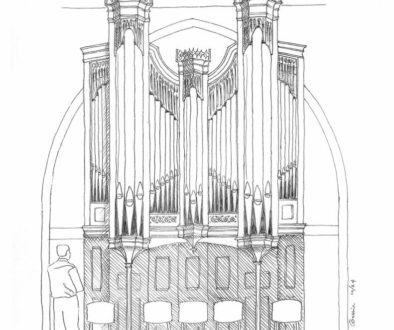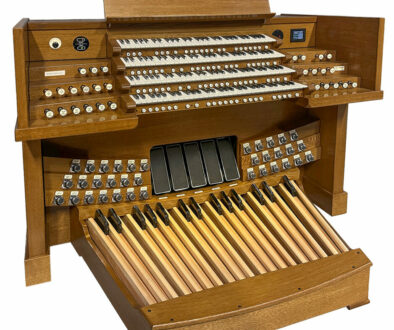An Organ for Orchestrators
Consider the talented choir accompanist. Seated at the organ bench, this person fulfills all the duties of a first-class orchestrator, with the added responsibility of playing the performance! These are the accompanist-orchestrators, super-musicians of our field, sensitive and creative in preparation and performance. Our new organ for Church of the Good Shepherd in Corpus Christi, Texas was designed to give the accompanist-orchestrator all the musical resources needed to fulfill this role.
When designing an organ for the accompanist-orchestrator, tough choices must be made to fit within space and budget. Asking simple questions like, “what’s more useful to the client, an Oboe or a Larigot?” can reveal the best path forward. All voices chosen must have the largest usable playing compass, and effects are always subservient to beautiful staple ingredients (voices). For Church of the Good Shepherd, we employed our usual diapason scaling methods to ensure color variety across the whole organ. Cohesion between diapasons comes from thoughtful scale variation, careful voicing, slotting, and – new with this organ – a languid counter-bevel.
Organ builders are always battling height constraints, and flue pipes are often mitered or Haskelled to compensate. The latter method, better for strength and overall space, often leads to weak, unfocused basses. Our Head Voicer, Timothy Fink, found the remedy in studying the master of Haskelling, Estey. Following Estey’s lead, we fitted all Haskelled pipes with a bucket languid. The result is fantastic: the change to Haskelled basses is imperceptible, with plenty of rosin and singing tone all the way to low C.
Our double-enclosed Swell reeds can be used to anchor full organ or accompany a small (human) choir. Director of Music Ministries Dr. Mi Ou Lee demonstrated their flexibility by using the 32’ Contra Posaune in perfect balance as part of the string celeste ensemble. In the Choir, the 16’ English Horn – a stop usually only useful for solos in one part of its compass – is voiced with a rich, full bass. Much like an orchestral bassoon section, it can be used in myriad ways for single lines and harmony.
The Choir division in Corpus Christi deserves special mention. It is designed to follow exactly the dynamic contours of a (human) choir. The dulcianas sing with a pure “ah” vowel and blend seamlessly with singers. All color stops can be used with even the most sensitive singers, from the barely-audible (box closed) Flute Celeste to the cornet and Tromba. This division, more than any other, offers inspiration to the accompanist-orchestrator and begs for creativity in every accompaniment.
Organs serve in many roles, and even the most devoted church musician will admit there is more to life than choral accompanying. Expression and musicianship will always carry the day, and any organ that meets the demands of a talented accompanist-orchestrator will perform all music with ease. Building one organ to sound perfect in every context is impossible. Building one organ to sound musical in every context is the key.
This principle was demonstrated masterfully by consultant Ken Cowan, taking the organ through choral accompaniments, hymns, and repertoire from Rachel Laurin to Bach. Cowan’s work with us produced an organ of many colors and capabilities, and Director of Music Ministries Dr. Mi Ou Lee is already using the instrument to its potential each week. It was our pleasure to work with Cowan, Lee, and all the people of Church of the Good Shepherd, including Father Milton Black, Rector; and Shane Smith, Facilities Director.
Bryan Dunnewald, Schoenstein & Co.
Bryan Dunnewald is President and Tonal Director at Schoenstein & Co.


